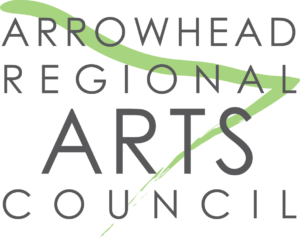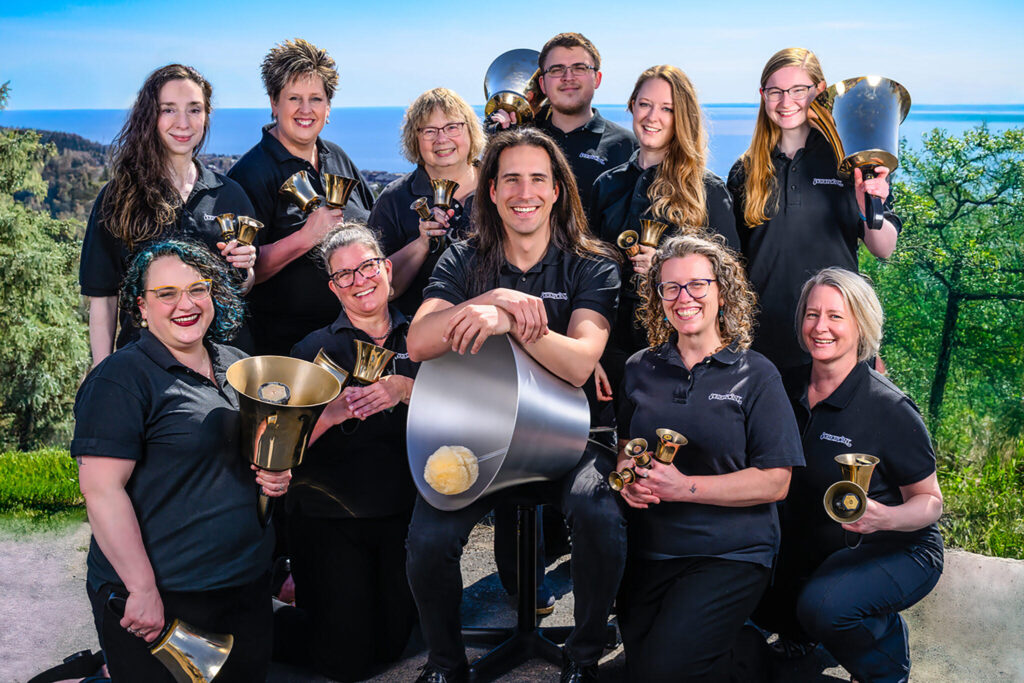
Concert evenings begin at 6:00PM, Weber Hall lobby doors open.
Concert Hall & Seating Opens at 6:30PM.

This activity is made possible in part by the voters of Minnesota through a grant from the Arrowhead Regional Arts Council, thanks to appropriations from Minnesota State Legislature’s General Fund.
Guest Artists ($500+)
Jan Erickson
Greg Repensky
Helena Jackson
Musician Chairs ($250+)
Linnea & John Swenson Tellekson
Richard E. (Dick) Swenson
Tiss Underdahl (In memory of Beryl Pettigrew)
Benefactors ($100-249)
Christine Underdahl
Kari Koehler
Janet Akervik
Michael & Carol Donahue


The musicians of the Lake Superior Chamber Orchestra and I are thrilled to welcome you this summer as we open our 39th season! This summer we embark on an inspiring musical journey that spans genres, generations, and cultures, celebrating artistry, storytelling, and the sheer joy experiencing live music.
Highlighted in the three concerts of this summer are guest artists of national prestige who share roots in Minnesota. They are pipa virtuoso Gao Hong, touring pianist Andrew Staupe, and national premiere handbell choirs, Strikepoint. The programs celebrate a vast range of cultural excellence and encompass pieces written over a 200-year span by Beethoven, Suk, Pärt, Payn, Tan Dun and Bao Yuankai. Notably, we will also premiere a new version of Lumos, composed by our own Greg Kehl Moore, professor at University of Wisconsin-Superior.
As an organization that values community engagement, we are extremely excited to continue the success of our quartet program to nurture new generations of young musicians. The students of The Quartet Project program receive coachings from LSCO members in the weeks leading up to the concert. The accumulation of their efforts will be showcased in our last concert in the form of pre-concert quartet performances and a side-by-side finale with the LSCO. Maestro Warren Friesen will once again return to conduct this portion of the concert that has such important significance to our identity.
We are also thrilled to welcome back the Young Artist Piano Camp as our collaboration partner this season. The winner of the Piano Camp’s concerto competition will solo with LSCO on Beethoven’s Third Piano Concerto. Such an experience is transformative to young musicians and we are honored to support talented pianists of the new generations.
As the Music Director of LSCO, I am proud to be part of this vibrant cultural organization that seeks to expand the artistic boundaries and enrich the living quality of our community. As always, I am grateful that you have chosen to invest in the quality of our community through supporting our missions in arts. Music is most powerful when it is shared. So please sit back and enjoy the music. Thank you!
~ Ho-Yin Kwok

This activity is made possible by the voters of Minnesota through a grant from the Minnesota State Arts Board, thanks to a legislative appropriation from the arts and cultural heritage fund.
Bao Yuankai ….. Leaving for the West Pass from Seasons in the Taihang Mountains ….. 4′
One of Bao Yuankai’s largest orchestral works is the Chinese Sights and Sounds, a 6-part, 24-movement suite written in 1991. The suite features Western orchestration of Chinese folk tunes Bao personally collected from various regions of China. “Leaving for the West Pass” is a 19th-century folk tune originating from the mountainous region of northeast China. It describes the longing and nostalgia experienced by wives whose husbands had to travel beyond the Mongolian desert for work from the West Pass, an important fort on the Great Wall of China.
Josef Suk ….. Serenade for Strings, op. 6 ….. 26′
Josef Suk composed the Serenade for String Orchestra, op. 6 in 1892 at the suggestion of his teacher (and later father-in-law), Antonín Dvořák, who recommended that the pupil broaden the emotional content of his compositions and write more cheerful music. The Serenade garnered the attention and admiration of Johannes Brahms and made Suk’s name known to Europe’s audience. Written in four movements, the Serenade begins with a genially poised first movement, followed by a graceful dance movement. The heart of the work is the lyrical and sometimes emotional third movement. The work ends with an emphatic ending of the finale that shows great virtuosity of the string orchestra.
Tan Dun ….. Pipa Concerto (1999) ….. 20′
Tan Dun’s Pipa Concerto is inspired by the 4000-year-old Chinese tradition at Taoist funerals in which shamans communicate with spirits past and future, creating a dialogue with nature and the human soul. The piece displays an effortless fusion of traditional Chinese and the Classical European style, with the orchestra contributing stomps, yips, yells, sighs, hand-slaps, plucks, slides and improvisation. A notable moment is the slow third movement where the pipa opens with a pentatonic melody, followed by muted strings in traditional western contrapuntal lines and harmonies that gradually overlay the Prelude in C# minor from Bach’s Well-Tempered Clavier.

Gao Hong, pipa
Gao Hong, pipa player and composer, began her career as a professional musician at age 12. She graduated from the Central Conservatory of Music in Beijing where she studied with pipa master Lin Shicheng. In 2005 Gao Hong became the first traditional musician to be awarded the prestigious Bush Artist Fellowship, and in 2019 she became the only musician in any genre to win five McKnight Artist Fellowships for Performing Musicians. In 2018 she became the first Chinese musician to win a Sally Award from the Ordway Center for the Performing Arts. Saint Paul Mayor Melvin Carter, declared April 3, 2022 to be Gao Hong Day. Gao Hong currently serves as the professor of Chinese Musical Instruments at Carleton College. She has performed throughout Europe, Australia, Argentina, Japan, Hong Kong, China, and the United States.
The Young Artist Piano Camp is returning to Duluth and will be collaborating with the LSCO for our July 17th concert. The winner of the Piano Camp concerto competition will perform their winning performance piece with the LSCO.
We also welcome touring pianist Andrew Staupe, as well as look forward to premiering a new version of Lumos, composed by our own Greg Kehl Moore, professor at University of Wisconsin-Superior!
Greg Kehl Moore ….. Lumos (2025 version) ….. 10′
Greg is a professor of music and he has served as Jazz Program Director at University of Wisconsin-Superior since 1997. He is active as a performer and composer in jazz, classical and rock idioms. Greg has composed for jazz ensembles, orchestras, woodwind ensembles, symphonic bands, percussion ensembles and chamber ensembles. Greg’s compositions Sway and Music for Four Saxophones and Percussion were performed at the prestigious 2003 World Saxophone Congress. His jazz solo work is featured on recordings by the University of Texas Jazz Orchestra and the Big Time Jazz Orchestra. He is the founding director of two rock tribute bands: Duluth Transit Authority (Chicago) and Show Biz Kids (Steely Dan).
Ludwig van Beethoven ….. Piano Concerto No. 3, op. 37 ….. 35′
Young Artist Piano Camp Concerto Competition Winner (1st mvt)
Andrew Staupe (2nd & 3rd mvt)
Beethoven’s encroaching deafness meant that his days as a performer were coming to an end, but in 1800, when he wrote the Piano Concerto No. 3 in C minor, he was still able to play, acting as the soloist at the premiere in 1803. Terse drama and strong gestures, Beethoven left no room for doubt in this concerto. It shares the key of C minor with the Fifth Symphony – as well as that work’s martial elements and intensity. Listen for cadenzas: Beethoven wrote cadenzas for all three movements. At the end, he resolves the struggle in sunny C major.

Andrew Staupe, piano
Pianist Andrew Staupe is emerging as one of the distinctive voices of a new generation of pianists. Andrew has appeared as soloist with many of the top orchestras throughout the United States and in Europe, including the Baltimore Symphony, San Diego Symphony, Houston Symphony, Minnesota Orchestra, Fort Worth Symphony, Indianapolis Symphony, the George Enescu Philharmonic in Romania, and many others. Andrew has performed recitals across the United States and extensively in Europe, appearing in distinguished concert venues including the Concertgebouw in Amsterdam, Rachmaninov Hall in Moscow, the Schumann Haus in Leipzig, and the Salle Cortot in Paris. Deeply committed to teaching, Andrew is an Assistant Professor of Piano at the University of Houston.
Ludwig van Beethoven …..Symphony No. 8, op. 93 ….. 24′
The Eighth’s boisterously inventive spirit is apparent from the outset. Beethoven’s idiosyncratic use of dynamics and rhythmic energy encompasses the charming, good-natured attitude of the opening as well as passages in which a sense of almost primitive forces pressing us onward. The composer himself once said that he had composed the Symphony No. 8 in an “unbuttoned” spirit. The work’s many instances of rugged humor prove the point. The final movement shows the composer in his most strikingly, even aggressively, original vein. In one of the funniest passages the composer ever wrote, he extends the coda to outrageous proportions, hammering away as if to say “The End … no, really … The End!”
We welcome national premiere handbell choirs, Strikepoint to our July 24th concert!
Mr. Warren Friesen, LSCO founder and Conductor Emeritus, will also be returning to conduct The Quartet Project and LSCO for their side-by-side piece during the concert.
Arvo Pärt ….. Symphony no. 1 “Polyphonic” (1963) ….. 16′
Symphony No. 1 was completed in 1963 after graduating from the Tallinn Conservatory and is dedicated to Heino Eller, Arvo Pärt’s composition professor. The title of the symphony, Polyphonic, as well as the titles of the two movements – Canons and Prelude and Fugue – refer to contrapuntal texture and the forms of classical polyphony. In the culmination passages of the symphony, he has used the means of a sound mass, e.g. clusters. The canons in the first movement run in waves, rising highest toward the end. A beautiful violin solo in the beginning of the Prelude seems to play the role of a slow middle movement. The main culmination of the entire composition is formed in the Fugue by a single energised dynamic ascent.
William Payn ….. Heart Melodies ….. 17′
With more than 30 compositions to his credit, one of Dr. Payn’s major contributions to Handbell Musicians of America has been to write quality music that “raises the bar” for handbells. His compositions also help to bridge the divide between the world of handbells and other types of music. In 1998, he wrote Heart Melodies, possibly the first original work for handbells and orchestra. The piece uses 60 handbells and 20 choir chimes. The slow first movement is entitled Yearning. The second movement, written in the form of theme and variations, is entitled Devotion and is much darker in color.

Strikepoint, handbell choir
Strikepoint, from Duluth, Minnesota, is a church-based, community/professional handbell ensemble founded in 1984 by Director Emeritus Bill Alexander. In September 2024 Derek Bromme became the new Artistic Director of Strikepoint. This eleven-member group performs in a directorless ensemble setting. Strikepoint has toured extensively throughout the United States, Canada, Hawaii, Hong Kong, Japan, England, Scotland, Wales, and Sweden. Their music has been featured on many local, national, and international radio, television, and online programs as well as live performances with the Duluth Superior Symphony Orchestra, the Arrowhead Chorale, and other professional musical organizations. They have produced nine albums and are considered one of the very top handbell ensembles in the world.

Norman Leyden ….. Serenade for Strings ….. 11′
Known for his thousands of film, radio, and symphonic arrangements, prolific composer Leyden published this suite for string orchestra in 1971. The four brief, contrasting movements blend classical/baroque tradition with stylistic harmonies popular to the era. The first two movements, Prelude and Fugue, present stately melodies that are passed throughout the orchestra. The third movement, Nocturne, has a steady and pleasant feel in five beats to the measure, while the last movement, Cakewalk, finishes the piece in a marked and jaunty style not unlike a rustic folk dance.
Wojciech Kilar ….. Orawa ….. 9′
Kilar’s composition Orawa, completed in 1986, takes its title from the Carpathian region of the Polish-Slovak border. It also refers to mountainous terrain and grass-covered mountain pastures with rivers running through. It is the final work in Kilar’s “Tatra Mountain works” for string orchestra and has been suggested to depict the potent forces of nature and an exuberant folk festival at harvest time. Orawa is characterized by use of repeated figures played off against one another, with its texture varying in dynamics and rhythms for dramatic effect.
